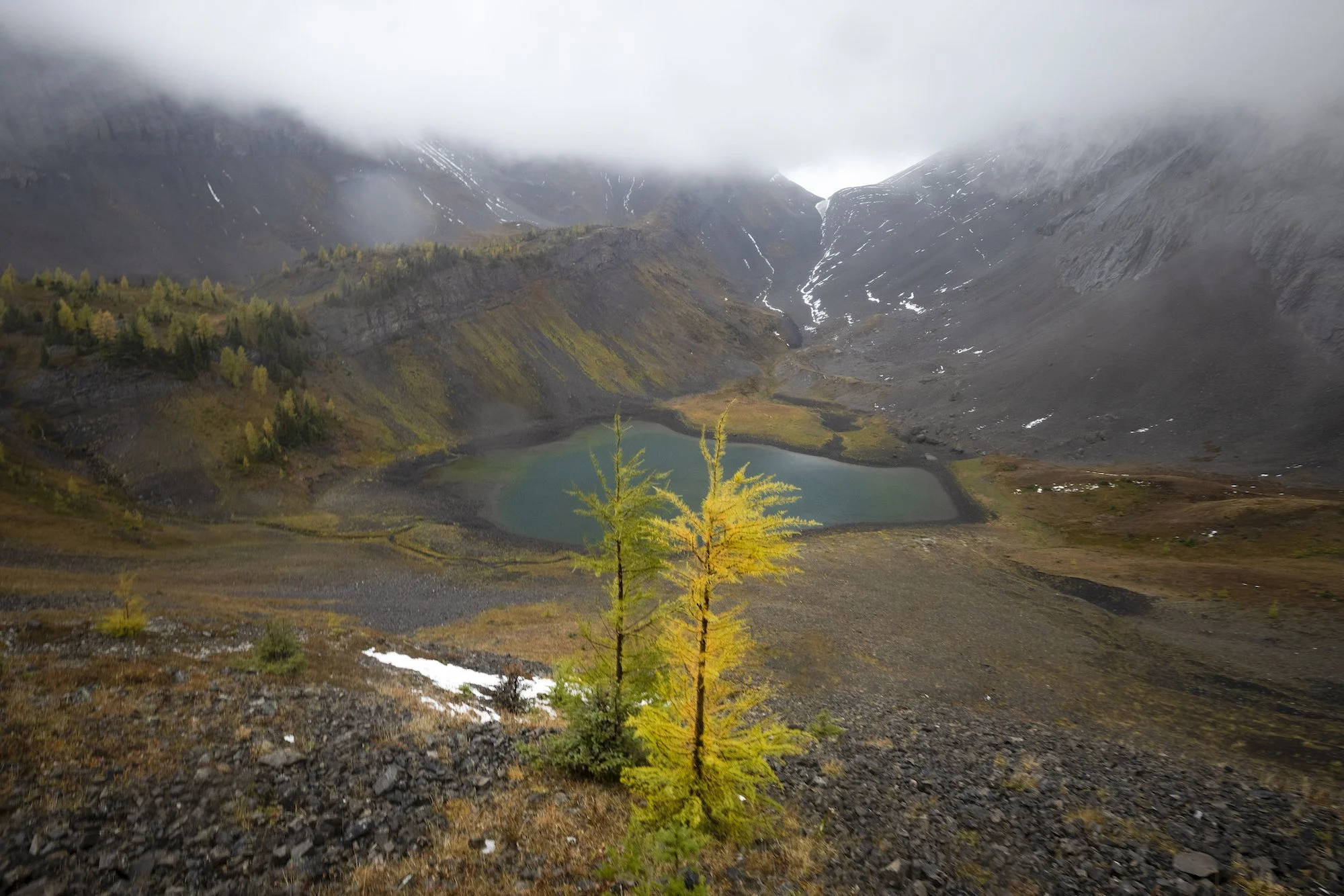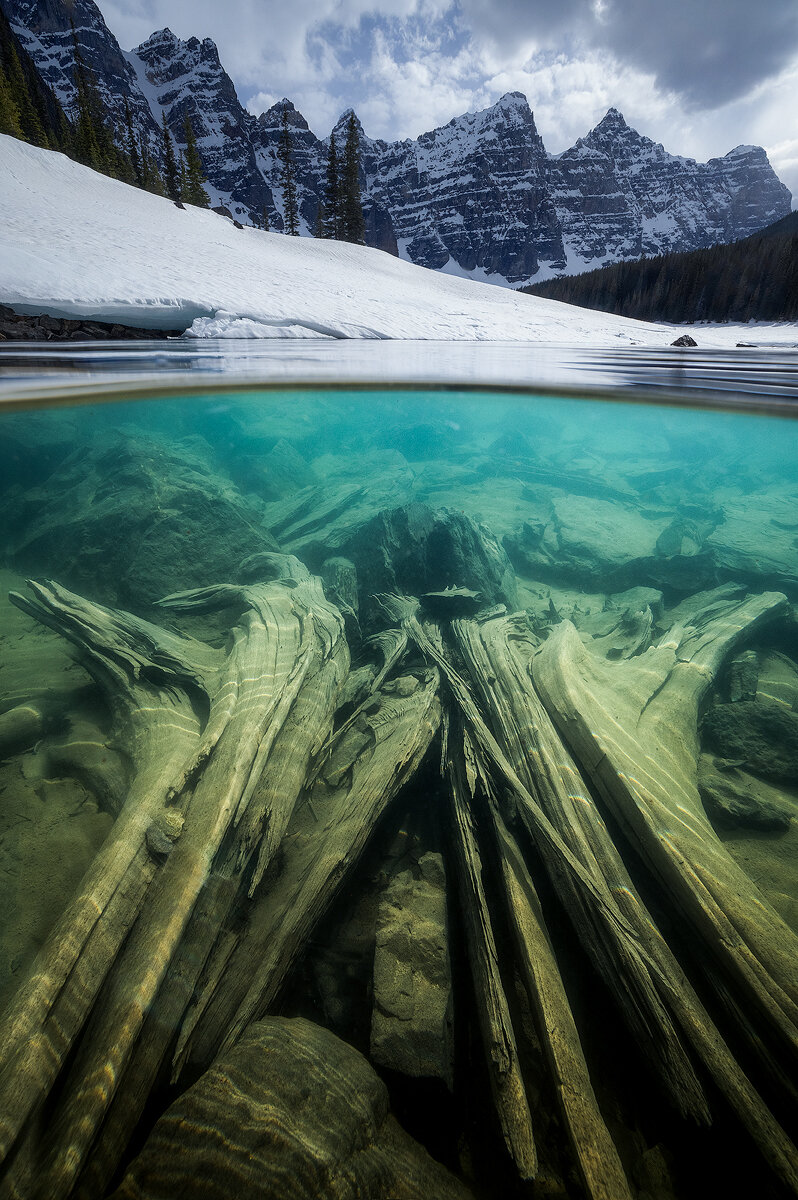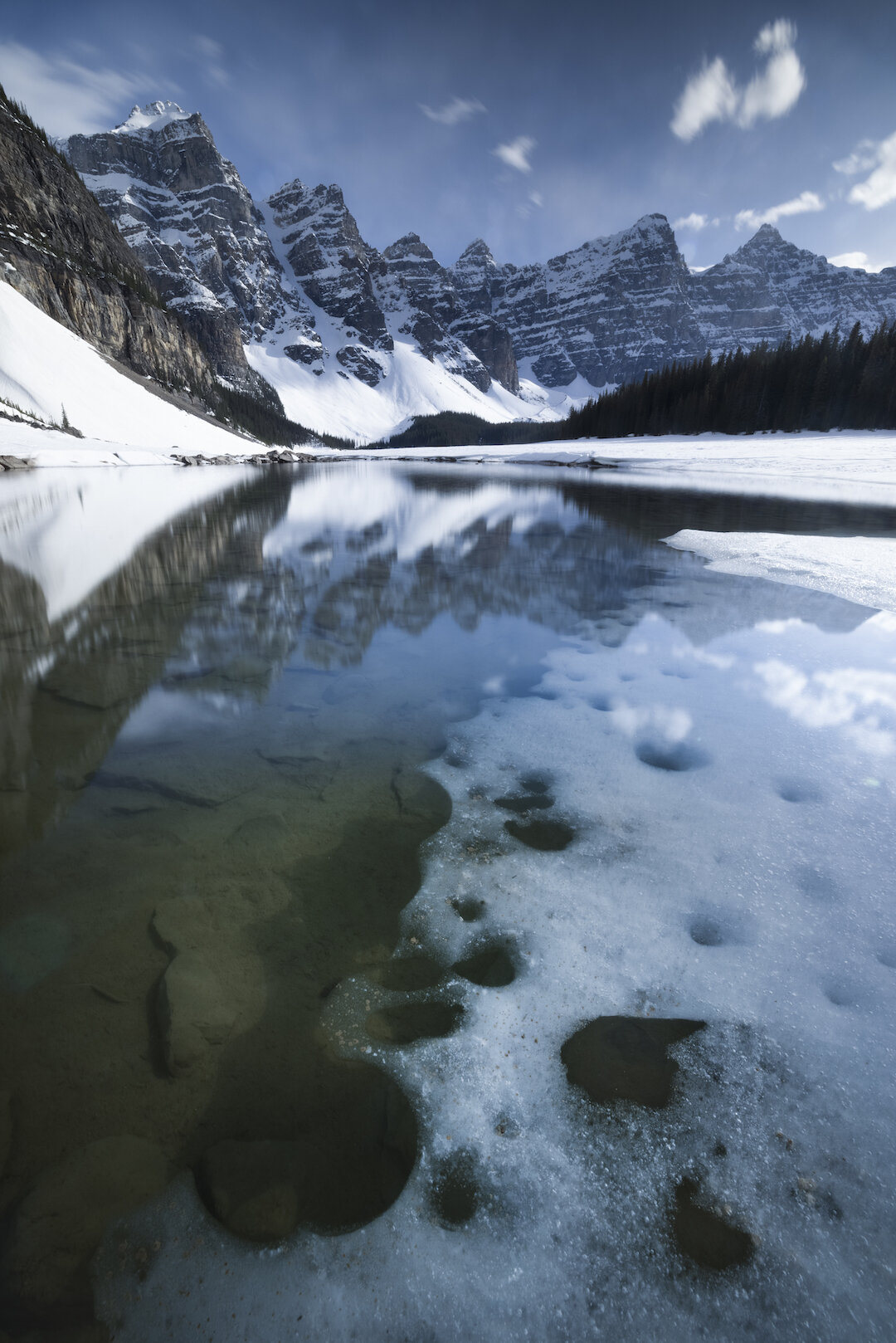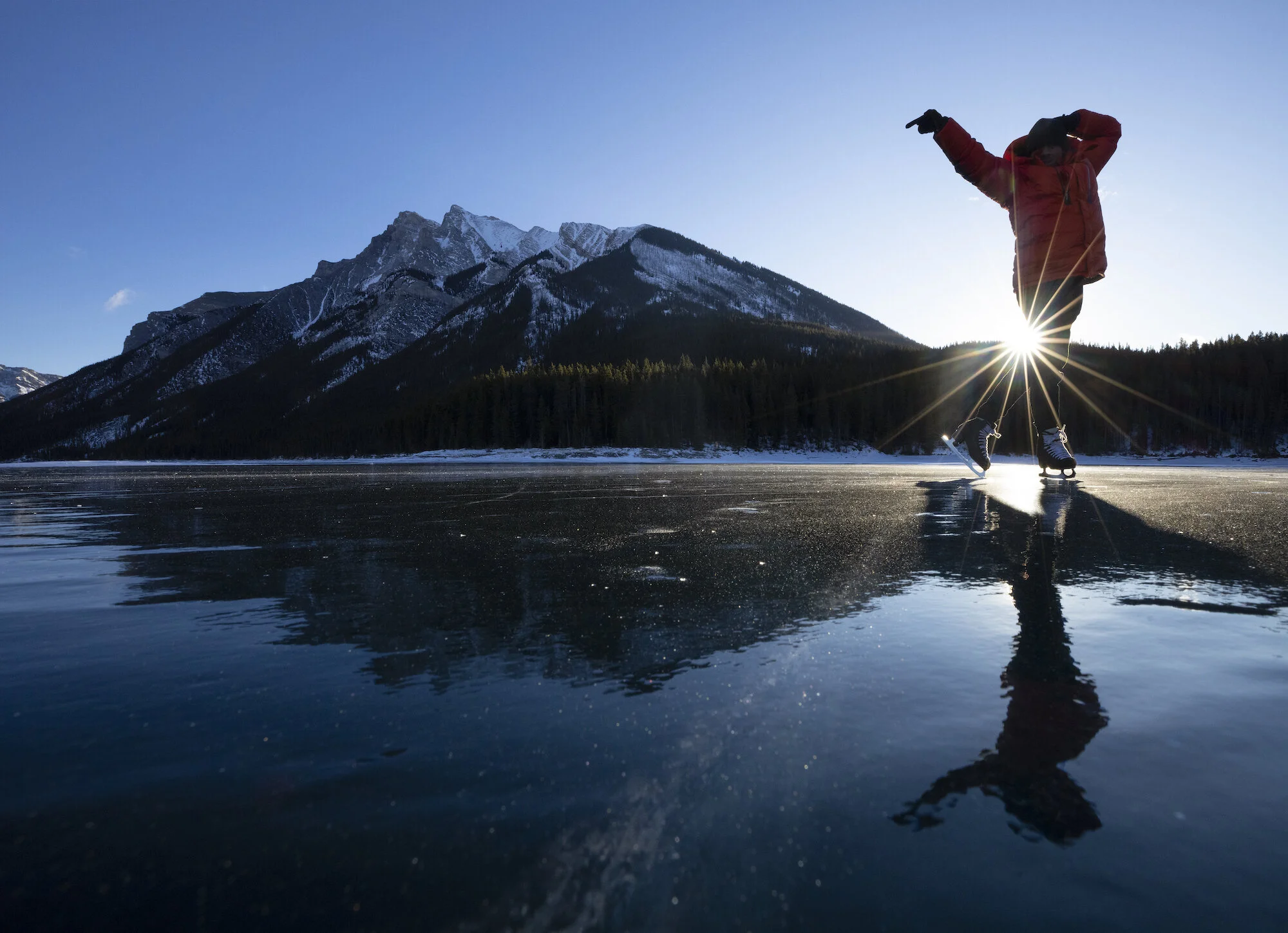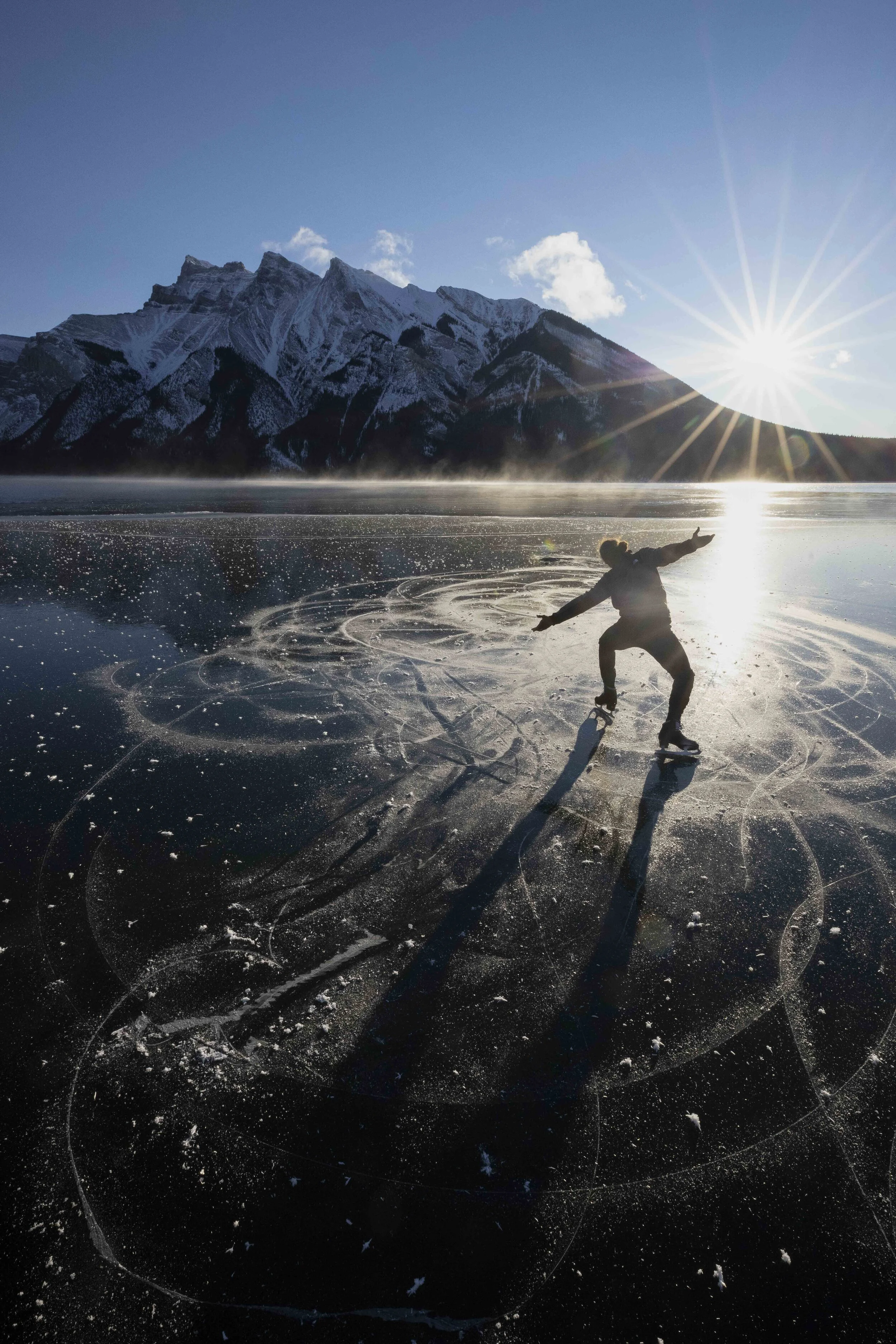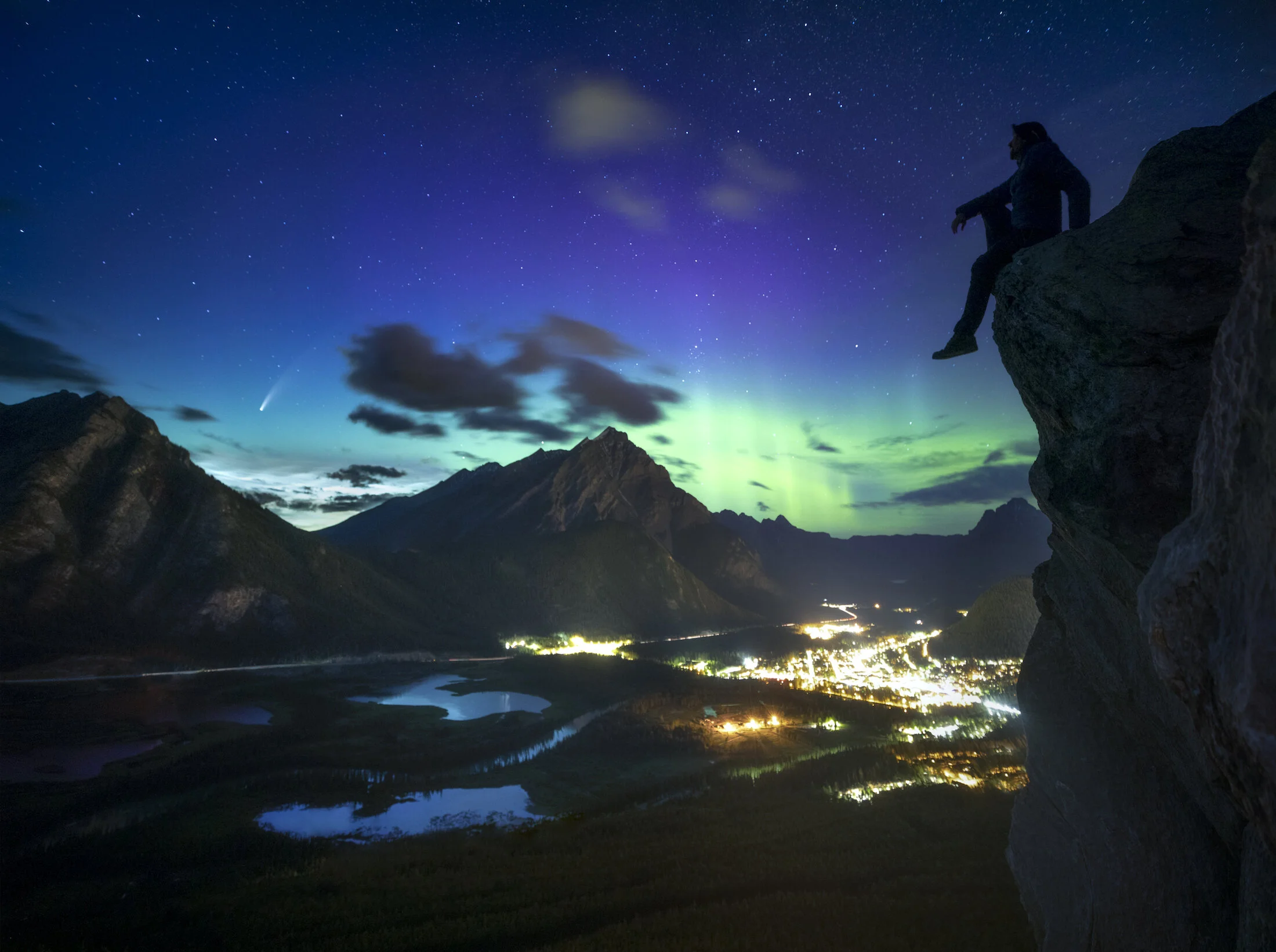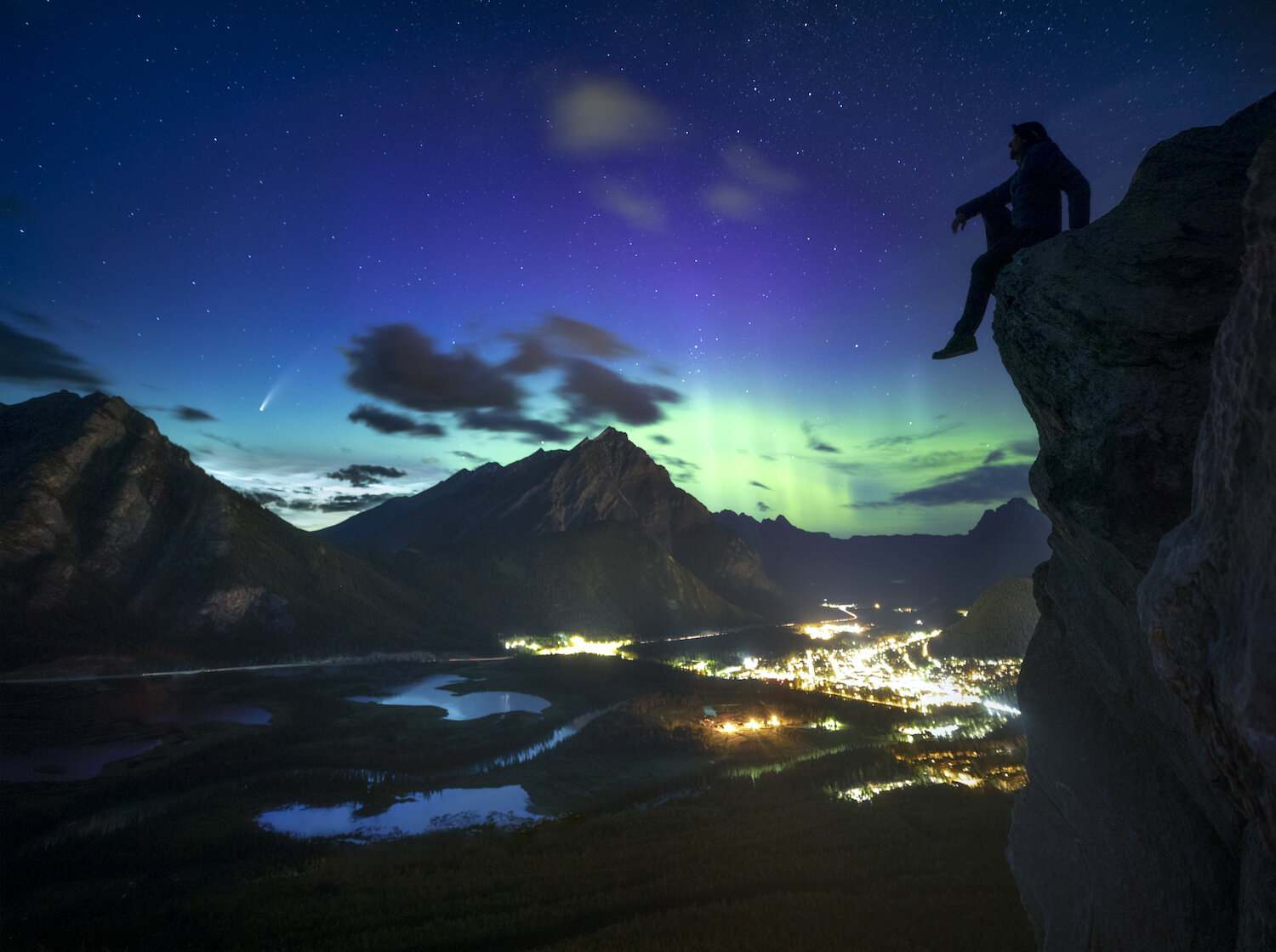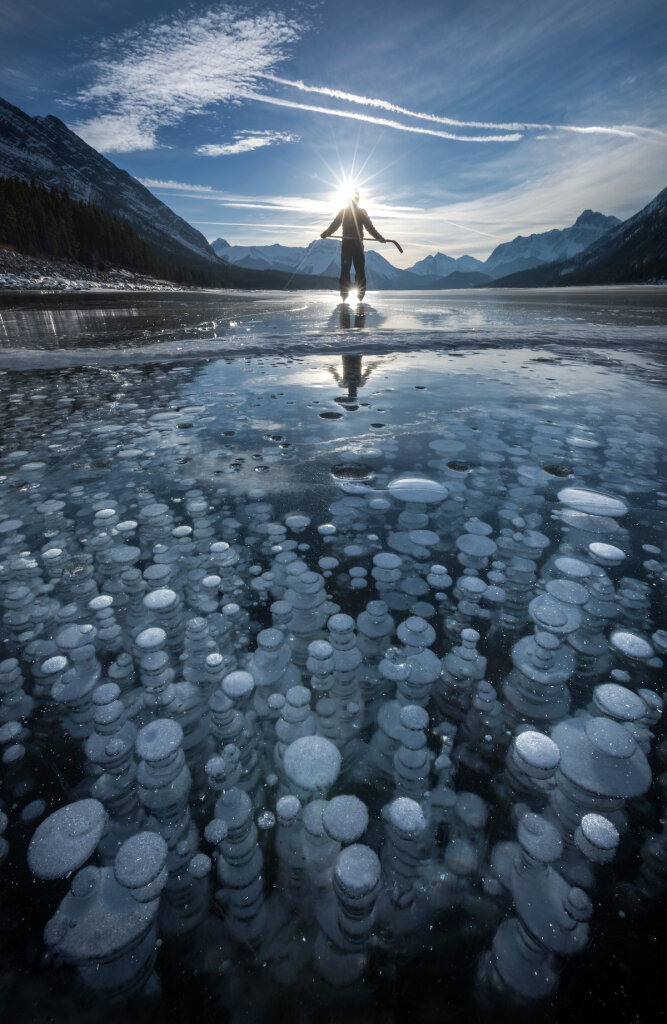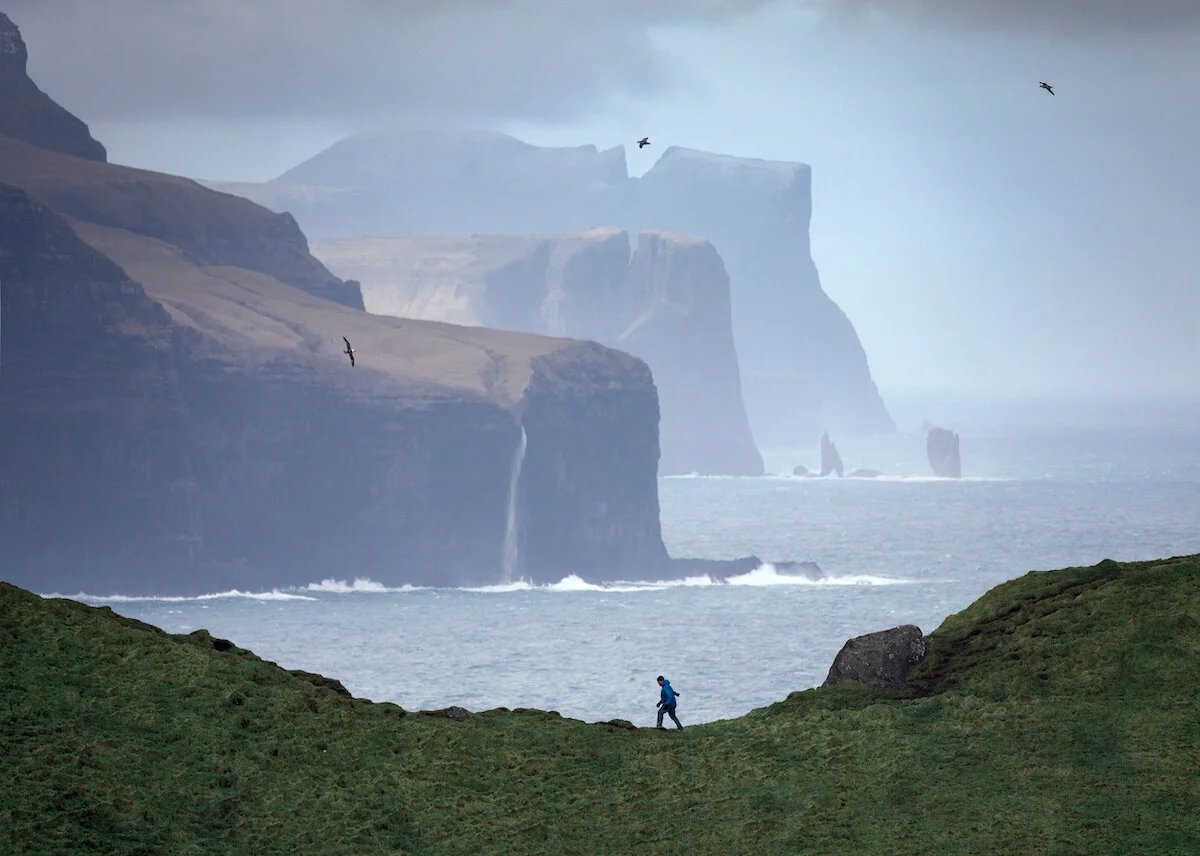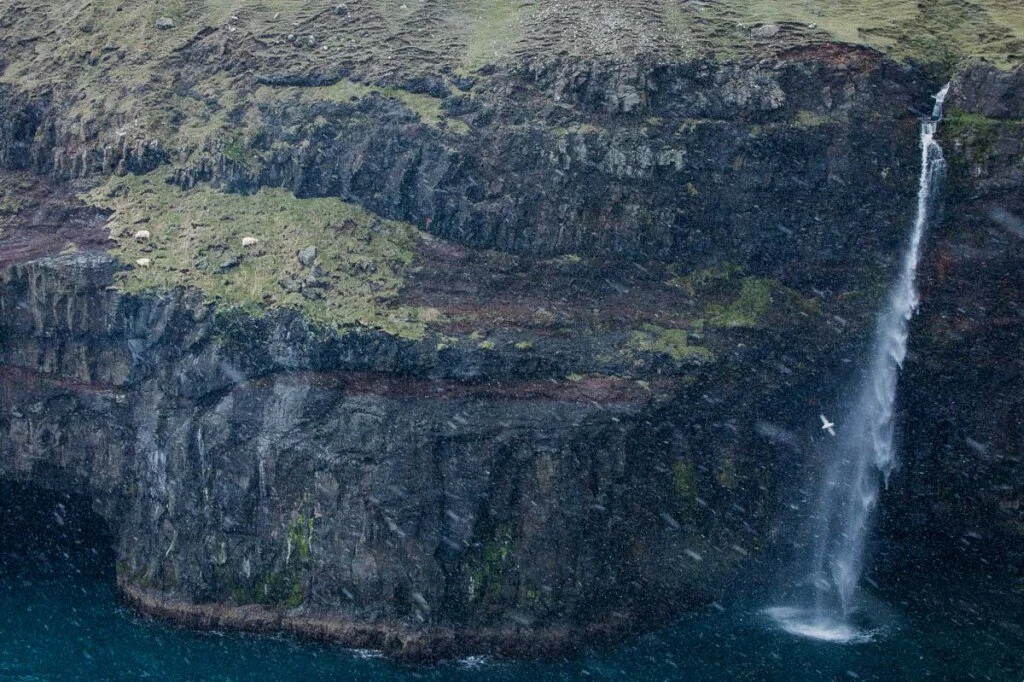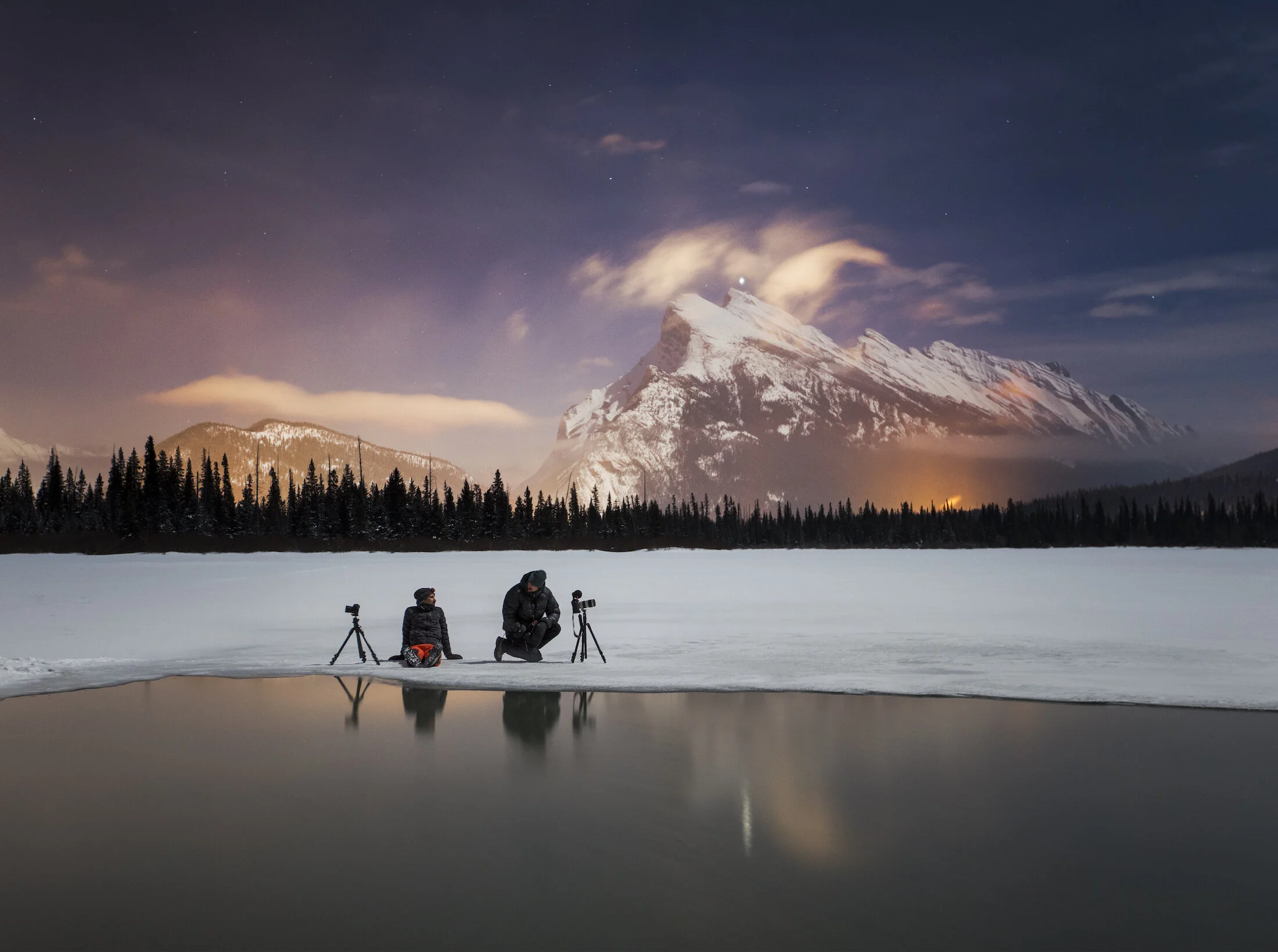
Striking Gold: A Larch Season Photo Mission with the Lowepro PhotoSport PRO
Magic unfolds in the Canadian Rockies during the transition to fall. It’s larch season, a glorious but short-lived window where the needles of this “deciduous conifer” transform from green to gold, and the perfect time to set off on an overnight backcountry adventure with the brand new Lowepro PhotoSport Pro.
Guest post by Trixie Pacis.
Originally published by Lowepro.
Magic unfolds in the Canadian Rockies during the transition to fall. It’s larch season, a glorious but short-lived window where the needles of this “deciduous conifer” transform from green to gold. If you conjure an image of the iconic peaks and turquoise lakes of the Rocky Mountain landscape beneath a blanket of fall hues, you’ll understand why droves of photographers and adventurers converge on this colourful display. I set off on an overnight backcountry adventure with award-winning adventure photographer Paul Zizka to see what all the fuss was about.
Planning a Larch Season Photo Mission
When it comes to capturing golden larches, timing is everything. Larch season lasts just a few weeks, typically from late September to early October, until the trees shed their needles for the winter. Arrive too early and the larches will blend in with neighbouring evergreens. Wait too long and the needles will have faded or been blown off the branches by a storm.
Paul and I plotted an overnight backcountry trip to capture this phenomenon. Paul was adamant about an overnighter because it would allow him to shoot the golden larch trees and turquoise lakes of the high in the alpine in early morning and evening light. Paul chose a destination on the border of Banff National Park and Kananaskis Country in the Canadian province of Alberta with two objectives in mind: the northwest ridge of Mount Birdwood as well as a stroll through the larch forest around Mount Smutwood. He arranged for a Banff National Park bivouac permit to camp overnight as well as a permit to recreate in Kananaskis Country, through which we would be passing. With a departure date and destination set, it was time to pack our bags.
Packing for an Overnight Photography Adventure
Autumn is a beautiful season to explore at high elevations but camping in cold weather requires additional gear. I’ve embarked on multi-day treks from Alaska to the Himalayas with a camera in tow but on this trip, I discovered that not all backpacks are made equal; watching Paul use a bag designed for photographers as much as backpackers was a revelation.
I met Paul at his place on the crisp September morning of our trip. Paul was in the process of packing and introduced me to the Lowepro PhotoSport PRO 70L backpack, the latest addition to Lowepro’s proven line of camera bags. In a nutshell, PhotoSport PRO was designed for photographers going on multi-day backcountry expeditions. It integrates all the features required for an overnight trip plus all the bells and whistles for secure and convenient camera access.
“They really thought of everything,” Paul said as he packed the PhotoSport PRO with all the gear he would need for our trip. Indeed, the bag was designed with every essential detail in mind.
→ We’re giving away a Lowepro PhotoSport PRO 70L backpack (value $699 CAD). Enter here!
Camera Gear: The PhotoSport PRO features front and back panel access. Favouring the rear opening, Paul packed his Canon R5 mirrorless camera and three lenses using the GEARUP PRO XL insert that comes with customizable velcro inserts to hold everything in place. There was even extra room for a few additional items including his headlamp.
Camping Gear: With his camera secure, Paul loaded his sleeping bag and mat into the backpack’s bottom pocket. Storing these items here cleverly provides extra padding below the camera gear. He then strapped his one-person tent to the adjustable straps outside the bottom pocket.
Paul packed his camping stove, dehydrated meals, and spare layers in the PhotoSport PRO’s main compartment along with the RunAbout foldable day pack. Even after packing all the essentials for a one-night trip, there was plenty of room to spare.
Accessories: Paul tucked his tripod and water bottle into the side pockets (pointing out that the bag has a side pocket for those who prefer hydration reservoirs with drinking tubes. Last but not least, Paul stashed the small accessories he wanted to keep accessible in the removable lid including his phone, wallet, sunglasses, and satellite device.
Before setting off, Paul adjusted the torso length, load lifter straps, chest straps, and padded waist straps for maximum comfort. Paul also mentioned that the Activ Lift system and adjustable pivoting waist transferred weight to the hips and provided a wider range of motion.
I was intrigued by the bag’s thoughtful design and curious to see it in action.
The Lowepro PhotoSport PRO 70L backpack holds up against heavy rain. Photo by Trixie Pacis.
Striking Gold
Within a few hours, Paul and I were deep in moose country with the trailhead far behind us. The start of our adventure traced a river through the forest and into an open valley. The sun was shining and a light dusting of snow accentuated each sedimentary layer of the surrounding peaks. We bid the valley floor farewell and began our ascent to the high alpine. We were soon surrounded by larch trees of every hue—from neon green with gold tips to buttercup yellow. I felt the euphoria of “striking gold”.
Suddenly, winter was upon us. Thick snowflakes fell, many carried sideways by fierce gusts of wind. By the time we reached our bivy spot, the ground was white. Paul and I pitched our tents amidst a stand of butterscotch-coloured larches then glanced at the northeast ridge of Mount Birdwood through the fiery foliage. We quickly agreed to adapt our plans in light of the unexpected weather. The summit of Mount Birdwood was just around the corner and looked manageable despite the fresh layer of snow.
Paul hikes towards the summit of Smutwood wearing the RunAbout insert. Photo by Trixie Pacis.
The Runabout
It was time to explore with fast and light. It only took a minute for Paul to transfer the GEARUP PRO XL housing all of his camera gear into the RunAbout day pack. It fit like a glove with just enough room for a spare layer, water, snacks and accessories. Without the same efficient system, my fingers froze before leaving camp.
We spent the evening on high ridges, photographing golden larches against turquoise lakes and white snow, and shouting in excitement over the wind. Working side-by-side, I couldn’t help but notice that Paul’s camera gear had been at his fingertips every step of the way. Whether carrying the PhotoSport PRO or the RunAbout, only two smooth zippers stood between him and his camera. Meanwhile, I was fumbling with multiple buckles, cinches, and zippers to wrestle mine free. The biting cold only accentuated the difference.
Paul photographs a pair of larches on the ridge to Smutwood. Photo by Trixie Pacis.
One Bag, Three Seasons
We crawled out of our tents at the crack of dawn to capture larches in the morning light and discovered that the fallen snow had melted overnight. Rain pummelled down from the heavens as we explored the grove of larch trees around Birdwood Lakes. Even on that torrential day, nature’s brilliant display had us running around in search of new compositions with childlike fervour.
In just one trip, Paul put his gear to the test in three seasons: summer, fall, and winter. When I finally asked him what he thought of the bag, he called it his “new go-to for future expeditions.”
That told me everything I needed to know about the Lowepro PhotoSport PRO 70L.
Photos by Paul Zizka.
The PhotoSport PRO in Action
Check out this video to go behind the scenes as Paul puts the Lowepro PhotoSport PRO to the test!
2021 Holiday Print Sale!
Our annual holiday print sale is here! This holiday season you can choose to take 20% off limited edition prints or pay the full price and we’ll donate 20% to the Alberta Children’s Hospital.
Our Annual Holiday Print Sale is Here!
We’ve got two options for you (valid through December 15, 2021)!
Save 20% off limited edition prints with checkout code HOLIDAYS2021.
Pay full price and we’ll donate 20% of the print sale to the Alberta Children’s Hospital! (See ‘why’ just below!)
Place your orders ASAP for timely delivery for the holidays! As shipping is still experiencing unforeseen delays, we cannot guarantee shipping times. The earlier you order, the better! Code is valid until December 15, 2021.
Email us with any questions at inquiries@zizka.ca
Why the Alberta Children’s Hospital?
Photo by @lauralouphoto.
Eight years ago, our little pal Jack began to have seizures. He was diagnosed with polymicrogyria (PMG), a rare structural malformation that makes his brain prone to these seizures. In the past few years, this brave warrior has undergone three brain surgeries at the Alberta Children’s Hospital to help him live seizure-free. These surgeries involve removing parts of the brain and result in some side effects, such as weaknesses with muscle control, but each time he amazes us with his bold spirit and desire to relearn how to do things like bike and ski.
His surgeries have left him with one functioning hemisphere of his brain. He’s one year post-op from his third surgery and he has been seizure-free! The next step is he gets to wean off of his seizure meds for the first time in his eight years of life.
Go, Jack!
This holiday season, we have chosen to give 20% of the sales from full-price prints to the Alberta Children’s Hospital as a tribute to Jack and his incredible family.
Jack and his family; parents Brooke and Rob, sister Laila, and twin brother Nash.
Moraine Lake Between Seasons: A Multi-Sport Photography Adventure
Most people know Moraine Lake for its turquoise waters, mountainous skyline, and bustling shoreline but the passing seasons paint entirely different scenes. Come winter, snow blankets the frozen lake and its lonely shores but it is rarely seen or photographed this way because of winter road closures.
Equipped with AquaTech underwater housing for the Canon R5 and aware that Moraine Lake would soon be teeming with visitors, I set out to capture a tranquil moment between seasons.
Most people know Moraine Lake for its turquoise waters, mountainous skyline, and bustling shoreline but the passing seasons paint entirely different scenes. Come winter, snow blankets the frozen lake and its lonely shores but it is rarely seen or photographed this way because of winter road closures.
Equipped with AquaTech underwater housing for the Canon R5 and aware that Moraine Lake would soon be teeming with visitors, I set out to capture a tranquil moment between seasons. I envisioned a shot that simultaneously showed two worlds, the one above the surface and the one below—but getting this shot would take a 22-kilometre self-powered and multi-sport journey timed perfectly without much information about the conditions. It sounded like an ideal adventure for our team at Paul Zizka Photography.
Paul Zizka Photography team member Trixie arrives at Moraine Lake on skis. Photo by Paul Zizka.
Biking the 11-kilometre road to Moraine Lake with skis, poles, ice axe, and camera gear in tow. Photo by Trixie Pacis.
Ready For Anything
I rode off towards Moraine Lake from Wilson Mountain Sports in Lake Louise Village with Meghan and Trixie. We each had skis and poles strapped to our backpacks. Mine was fully loaded with waders, gumboots, underwater housing, camera gear, an ice axe, Honeystingers, and a can of coconut water. I’d heard that plowing had begun on the road into Moraine but had no idea whether we’d be biking for one kilometre or eleven. Climbing the hill to the Moraine Lake turnoff, I hoped I would need all the gear I was carrying.
Moraine Lake is nestled in the Valley of the Ten Peaks at an elevation of 1,885 metres (6,183 feet). The road from Lake Louise Village winds gradually upward for 11 kilometres. The combination of the elevation gain and dynamic time of year meant we could expect a variety of conditions along the way. We navigated patches of ice and slush as we pedalled on and, as luck would have it, the road had been plowed up to the 8-kilometre mark. We stashed our bikes in the forest, swapped to light touring skis, and glided quickly through a section beneath an avalanche path, into a postcard view of the majestic Ten Peaks. The last kilometre or so was a quick descent to Moraine Lake with our fingers crossed for some open water.
Searching for foreground with brand new AquaTech underwater housing for the Canon R5. Photo by Trixie Pacis.
Finding Foreground
We didn’t know what to expect at the lake. Following a stretch of warm weather, I was hoping to find a hole in the ice large enough to submerge my camera into but packed an ice axe just in case. We skied up to the lake and I was thrilled to see open water glistening in the sun. I wouldn’t need the ice axe after all!
I ditched my skis, changed into waders and gumboots, and secured my camera inside brand new Aquatech underwater housing designed for the R5. Having tested the housing in the bathtub before the trip, I was confident it would keep my camera dry.
I wanted to compose a shot with something interesting in the foreground. I waded in, careful not to kick up too much mud or silt as I searched for interesting features beneath the surface. I found colourful rocks, rippled sand, dancing light, and the edge of the ice shelf. I also collected a red solo cup, tattered visor, and golf ball. In the end, what stood out to me most was a submerged tree.
Getting the Shot
After hours without stopping, it was finally time to snap the image. I half-submerged the camera and housing in order to capture the sunken log and the landscape above the surface in a single frame.
One trick I’ve learned for over/underwater photography is to submerge the dome entirely, lift it halfway, line up the shot, then click within the first few seconds (before water streaks on the dome). Here are the images I came away with.
Settings for the first image in the series.
With the mission accomplished, I took bonus photos of Meghan and Trixie from the iconic rock pile and soaked in the view. It’s rare to share Moraine Lake with only two other people. At around 4 pm, we clicked into our skis and trudged back to where we stashed our bikes. The plow had made progress since we last saw it, which meant that it wouldn’t be long before the usual crowds were back. We hopped back on bikes and enjoyed a downhill ride into the sunset.
There’s a lot that goes into the making of an image like this. Taking the shot only took five minutes while the round-trip took nine hours all in. That said, I always encourage putting the experience before the image. Going in, I knew that whether or not I got the image I was after, it would be a great team adventure.
Standing before a reflection of the Ten Peaks in Moraine Lake with AquaTech underwater housing in hand. Photo by Trixie Pacis.
The Gear
Images like these wouldn’t be possible without the right gear. I rely on underwater housing from my partner AquaTech for all of my underwater photography. I used AquaTech Edge Sport Housing for the Canon EOS R5 and was super impressed with the level of clarity it provided. Facing challenging conditions where the water is chilly and the light changes quickly, I was also glad to have reliable gear that made my job easier.
This adventure was also supported by bike and ski equipment from the fantastic team at Wilson Mountain Sports.
Behind the Image: The "What If" Time
Perhaps the two rules you hear the most in landscape photography are “the rule of thirds” and “the importance of moving your feet.” The first one I think gets way too much attention, but the latter cannot be emphasized enough. This image is a prime example.
Perhaps the two rules you hear the most in landscape photography are “the rule of thirds” and “the importance of moving your feet.” The first one I think gets way too much attention, but the latter cannot be emphasized enough.
This image is a prime example.
Kalsoy, Faroe Island. Photo by Paul Zizka.
I shot this in the Faroe Islands on Kalsoy (a particularly epic corner of the archipelago). My OFFBEAT colleague Dave Brosha and I spent a considerable amount of time there, starting off with the compositions that were obvious to us immediately upon arrival. It's a phenomenal place, quite overwhelming, and we were engrossed for a while. And I think we both created a few solid images. But, for me, the real magic happened at the tail end of our visit there, during what I call the "what if" time.
That "what if" time is often when I create my best images. At that point, I (hopefully) have at least one more "traditional" image I'm happy with and I start to operate with more freedom, with a more open mind, more experimentally. And, usually, that means covering some ground. I try to always make time to walk, scramble and downclimb so I can get a different perspective on the place. Often it leads to nothing (but, hey, I get some exercise out of it and it satisfies my curiosity). But occasionally it'll open a photo op that completely takes me by surprise. It's often hard to predict how elements will line up once you've changed your point of view. You can guess but you never really know for sure until you've put in the work.
That day, it paid off. I left before Dave and wandered over to a nearby exposed ridge. When I turned back towards the area where we had been shooting for a couple of hours, a phenomenal scene took shape. A dip in the ridge aligned perfectly with some of the world's highest sea cliffs. Birds were swirling around and waves were crashing hard. There was even a high waterfall and some sea stacks to appreciate in the background. It became obvious that by compressing all that with a telephoto lens, and adding the human element, there was a strong image to be made. I ran back to where Dave was to get the 100-400 lens, had a chat with Dave, and then returned to my perch.
Dave walked the ridge a few times and in one of the shots everything ended up where it needed to be. The birds had good positioning and Dave had a stance that looked natural. I could have gone with a static pose but more and more I find dynamic modelling looks less forced.
I hope that encourages some of you to allow that extra five-minute period of exploration and exercise when you head out on your next photo excursion!
OFFBEAT is heading back to the Faroe Island for an unforgettable photography workshop, October 4-9, 2021! Find information and registration details here.
Getting the Shot Giveaway
To celebrate the premiere of Getting the Shot Episode 2, we’ve teamed up with Life Outside Studio and Rag and Carbon to give away a framed limited-edition print by Paul Zizla (valued at $800 CAD; up to 24 x 36). The winner picks the image!
To celebrate the premiere of Getting the Shot Episode 2, we’ve teamed up with Life Outside Studio and Rag and Carbon to give away a framed limited-edition print by Paul Zizka (valued at $800 CAD; up to 24 x 36). The winner picks the image!
Want to get the shot? Find a complete list of entry options below. Enter in as many ways as you like. Each option counts as an entry!
Contest closes March 31, 2021, at 11:59pm MT.
→ Open to residents of Canada (excluding Quebec) and the United States (except Puerto Rico, US Virgin Islands and other United States territories and possessions). See full Contest Rules here.
Prize package includes:
A limited-edition print of your choice by Paul Zizka, printed and framed by Rag and Carbon Print Co.
You choose the image, size (up to 24 x 36) and further customizations!
Entry Options
YouTube
Watch and comment on the film on YouTube!
Follow Paul Zizka Photography, Life Outside Studio and Rag and Carbon Print Co. on Facebook and leave a comment below to let us know you have done so.
Follow @PaulZizkaPhoto, @RyanMichaelRichardson and @RagAndCarbon on Instagram and leave a comment below to let us know you have done so.
Follow @PaulZizkaPhoto and @LifeOutsideOn and tweet the following message:
Check out the latest episode of Getting the Shot! https://www.youtube.com/watch?v=cLsHjF8gBSs. You can win a limited-edition print by @PaulZizkaPhoto in partnership with @ragandcarbon and @LifeOutsideOn! To enter, RT this tweet and find more entry options at zizka.ca/blog/getting-the-shot.
Magic on Minnewanka: Wild Skating with Paul Zizka and Elladj Balde
The chase for wild ice is what brought Banff-based photographer Paul Zizka and professional figure skater Elladj Baldé together to make some magic.
by Trixie Pacis
See this article and find more great Alberta content on Travel Alberta.
Magic on Minnewanka
As winter unfolds in the Canadian Rockies, lakes freeze into picturesque skating rinks encircled by snow-capped peaks. Enthusiasts know that timing is everything. They watch for ideal conditions, which exist for a fleeting window when the ice is thick enough, but snow hasn’t fallen yet. This makes wild skating more like a thrilling chase than a pastime.
The chase for wild ice is also what brought Banff-based photographer Paul Zizka and professional figure skater Elladj Baldé together to make some magic.
The pair connected unexpectedly through Instagram. Baldé was creating a piece about the evolution of his relationship with ice but had never skated in the wild before. He reached out to Zizka, who had been posting skating adventures all season long. Plans hatched organically. All they needed was some fresh ice!
So, Zizka went on a search. After a cold night scouting new ice along the banks of Lake Minnewanka, he landed on a natural rink that could do the trick. Would Baldé think the ice was smooth enough to pull off his signature backflip?
There was only one way to find out.
Elladj Baldé finds fresh ice on Lake Minnewanka during his first-ever wild skate. Photo: Paul Zizka
Sharing the Magic
Baldé may have been late to the outdoor skating party, but he is certainly making up for lost time. Now that Baldé calls Calgary home, the pair have met on several occasions to create images and skate. Baldé even joined Zizka’s annual 50-kilometre round-trip traverse of Lake Minnewanka this January.
Moments before setting off, Baldé called his first wild skating experience a “transformational moment” in his life.
“I grew up with my career being based in the competitive world and being on the ice in order to be the best,” he said. “Having the opportunity to come out here and skate on a lake has just totally shifted this perspective I’ve had on what I do when I’m on the ice. I realized I could actually be on the ice and just play and be free and create.
Moments after capturing the backflip, Zizka and Baldé reflect on the magic of skating outdoors. Photo: Paul Zizka
For Zizka, the highlight of their first Minnewanka skate was introducing Baldé to the experience. “Many people are familiar with that sensation, that freedom that you get from effortlessly gliding across pristine ice. It’s almost like floating,” Zizka explained. “But once you add the green and blues below, and some of the most spectacular skylines reflected all around you, it really takes the experience to another level, and it’s something you can’t help but want to share with the rest of the world.”
The Banff community is made up of people from all over the world and all walks of life, drawn together to these remarkable mountains. It is a community connected by invisible forces, like a sense of pride for this place, seasonal traditions like skating and the bonds formed out in nature.
These invisible forces are just the kind of “magic” that needs to be shared.
As for Zizka and Baldé, rest assured they have more ideas, adventures and magic up their sleeves.
Baldé and Zizka continue to skate and shoot, even as the sun dips behind the surrounding mountains. Photo: Paul Zizka
Find more incredible Alberta content at TravelAlberta.com.
Trixie Pacis is a freelance writer and digital creator who travels the way she sips her coffee — slowly. After leaving Vancouver to explore and freelance abroad, she is thrilled to call the Canadian Rockies home. Her work has been published by Passion Passport, Mapped, Inside Himalayas and more. She also assists Paul Zizka Photography with all things social media. Follow Trixie’s wilderness adventures on Instagram (@trixie_).
Resources for Photographing the Canadian Rockies
Each week I get emails or messages from fellow photographers asking where they should photograph in Banff National Park and the Canadian Rockies. Others ask me where to go hiking or scrambling so that they can get off the beaten track. I love getting these questions and seeing people’s enthusiasm for shooting these beautiful mountain landscapes.
Each week I get emails or messages from fellow photographers asking where they should photograph in Banff National Park and the Canadian Rockies. Others ask me where to go hiking or scrambling so that they can get off the beaten track. I love getting these questions and seeing people’s enthusiasm for shooting these beautiful mountain landscapes.
To provide you with some direction, I thought I’d compile a list of resources that will help you photograph the Canadian Rockies – books, websites and apps you can leaf through for yourself to identify your next photo sweet spots.
Mt. Rundle, Banff National Park. Photo by Paul Zizka Photography.
Books About Hiking, Scrambling and Mountaineering
Canadian Rockies Trail Guide, by Brian Patton and Bart Robinson
The definitive and comprehensive Canadian Rockies hiking guide book.
Classic Hikes in the Canadian Rockies, by Graeme Pole
An experienced hiker/author compiles his list of classic hikes in the Rockies.
Scrambles in the Canadian Rockies, by Alan Kane
The best resource for beginner to advanced scrambles in the Canadian Rockies.
11,000ers of the Canadian Rockies, by Bill Corbett
All the big peaks of the Rockies in one comprehensive guidebook.
Canadian Rockies Photography Facebook Group
Join our Facebook Group dedicated to exploration and creativity through photography in the Canadian Rockies!
E-Book: Photography in the Canadian Rockies
For my opinionated guide on 60+ locations between Banff and Lake Louise, check out Paul Zizka’s Guide to Photography in the Canadian Rockies.
* Features 60+ locations organized into regions:
1. In and Around Banff Town
2. Lake Minnewanka
3. Bow Valley Parkway
4. Banff to Lake Louise via HWY1
5. Lake Louise and Area
* The best spots to shoot aurora borealis, wildflowers and fall colours.
* Easy-to-use symbols to guide you through each location, as well as access to online map.
* Suggested itineraries for 1 or 3 days in summer and winter.
Get your copy of Paul Zizka’s Guide to Photography in the Canadian Rockies.
Some locations in the Canadian Rockies are obscure, require good fitness and navigational skills. If you’re really keen to venture off the beaten track, I highly recommend you invest some time in finessing these skills. Coleman Lake, backcountry of Banff National Park. Photo by Paul Zizka.
Apps for Photography + Tracking Weather and Skies
I’ve been an iPhone user for years, and rely on a number of apps to help me make the most of my photos and “read the skies” in the Canadian Rockies.
Photo Apps
PhotoPills: Sort of a Swiss Army knife for photographers and great for planning shoots precisely.
The Photographer’s Ephemeris: Another great photo planning app.
Weather/Sky Apps
SpotWx: precise, thorough weather info.
StarWalk: A stargazing app, great for identification of constellations and celestial features.
ClearDarkSky: for cloud cover
Webcams
It’s easy to overlook this one, but webcams give you an instant look at conditions from higher elevations and in distant areas.
Aurora Watching Web Resources
Perhaps the biggest question of all is where people can shoot the auroras in the Canadian Rockies. Thanks to our dark skies, you have a good chance of seeing them if they’re out, so long as there is no cloud cover.
One of the best resources for tracking them in Alberta is the Facebook group called Alberta Aurora Chasers. You can request to join here: AlbertaAuroraChasers.
I have also compiled my personal favourites in another blog post. You’ll need to learn to read the data, but you’ll find the full collection in Aurora Watching Web Resources.
NEOWISE in the Skies over Banff, Canada
It has been a once in a lifetime – more like millennia – event. The comet NEOWISE has been visible in the dark skies over my home town of Banff, Alberta, and it’s been a highlight of my career to photograph it. Knowing it’s such a rare event has added an exhilarating element to the creative task of capturing it, and to see it converge with such celestial wonders as the aurora borealis has been an unforgettable experience.
It has been a once in a lifetime – more like millennia – event. The comet NEOWISE has been visible in the dark skies over my home town of Banff, Alberta, and it’s been a highlight of my career to photograph it. Knowing it’s such a rare event has added an exhilarating element to the creative task of capturing it, and to see it converge with such celestial wonders as the aurora borealis has been an unforgettable experience. You can find my favourite images below!
According to NASA: “Discovered on March 27, 2020, by NASA’s Near-Earth Object Wide-field Infrared Survey Explorer (NEOWISE) mission, Comet NEOWISE is putting on a dazzling display for skywatchers before it disappears, not to be seen again for another 6,800 years.”
→ All of these images are available as limited edition prints in our online print shop.
Comet NEOWISE over Banff, Canada. Photo: Paul Zizka.
Comet NEOWISE, noctilucent clouds, northern lights and mountains all join forces to create the most amazing celestial display over Banff, Canada. Photo: Paul Zizka.
Comet NEOWISE above Bow Falls, Banff National Park. Photo: Paul Zizka.
NEOWISE cruises over Cascade Mountain and the Town of Banff, Canada. Photo: Paul Zizka.
A climber descends by headlamp with NEOWISE looking on in Banff National Park. Photo: Paul Zizka.
Comet NEOWISE travelling over the Fairmont Banff Springs Hotel and the Spray River, Banff, Canada.
→ All of these images are available as limited edition prints in our online print shop.
Canadian Pond Hockey at Its Best
I’ve heard it said that we aren’t truly Canadian unless we’ve strapped on some skates, grabbed a stick, and puck-handled our way across a frozen lake or pond. During any given winter day in this country, people of all ages are lacing up and stepping out onto frozen ponds and lakes to enjoy our nation’s greatest backyard pastime.
Is there anything more quintessentially Canada than pond hockey?
I've heard it said that we aren't truly Canadian unless we've strapped on some skates, grabbed a stick, and puck-handled our way across a frozen lake or pond. During any given winter day in this country, people of all ages are lacing up and stepping out onto frozen ponds and lakes to enjoy our nation's greatest backyard pastime.
Sometimes, it can look like this:
Shoot out. Canadian style. Photo by Paul Zizka Photography.
In the Rockies, lake skating usually has a short window. You need a quick freeze and clear skies so that the snow doesn't fall and cover the ice. Usually, this occurs in late fall, but at times the wind blows strongly enough to clear the natural rinks of snow. I've enjoyed some incredible skating even in the month of February. Early in the season, you might see fish swimming below the ice as you skate above them!
But let's go back to pond hockey. I grew up playing hockey, and it's hard to shake the excitement of heading out on the ice, stick in hand, to shoot a few pucks around. Having the chance to capture pond hockey in a way that melds the majesty of the mountain with my own style of shooting is particularly gratifying as a photographer.
Some images are pre-visualized, such as the shoot-out at Lake Louise, and others are captured in the moment. But one of the best things about winter in these parts is that there is no shortage of lakes to photograph or skate on when conditions are prime. Besides Vermilion Lakes and Lake Louise, there is also a plethora of photographic (and skating!) opportunities at Minnewanka, Barrier, Two Jack, Kananaskis, Spray Lake, and Moraine Lake. If you're looking for bubbles, you're most likely to find them at Lake Minnewanka, Spray Lakes, and Abraham Lake.
If you're interested in the locations mentioned in this article, check out Paul Zizka's Guide to Photography in the Canadian Rockies (Banff to Lake Louise Edition).
I also highly recommend checking out the lakes at night. There is something otherworldly and dreamy about gliding along the smooth surface of a lake in the quiet darkness of the evening. The cool air and the silence get the blood pumping and the creative juices flowing, which is a good thing because it can get chilly standing still for photos!
Who knows, maybe Santa will come by to get in on the action...
It also goes without saying: Be safe, and always test the ice before getting into it! Hope to see you out on the lakes this winter!
All of these images are available for purchase as Limited-Edition Prints in a variety of sizes and formats. Place a custom order here!
Photo Journey Through the Faroe Islands
The Faroe Islands are a part of the majestic Kingdom of Denmark and located halfway between Iceland and Scotland in the North Atlantic Ocean. Endlessly rugged and beautiful, they are a prime location for landscape photography.
The Faroe Islands are a part of the majestic Kingdom of Denmark and located halfway between Iceland and Scotland in the North Atlantic Ocean. Endlessly rugged and beautiful, they are a prime location for landscape photography. In fact, OFFBEAT is headed back next fall for our ever-popular FAR OUT FAROES workshop!
It's one of my personal favourite places to shoot. Enjoy this compilation from this wild corner of the world!
Self-portrait at Slaettaratindur. Paul Zizka Photography.
Gasadalur locals, Vágar. Photo by Paul Zizka Photography.
The Faroe Islands are comprised of 18 rocky islands, which are linked together via road tunnels, ferries, causeways and bridges. Many hikers, photographers, and bird-watchers are drawn to the picturesque fjords, mountains, and steep coastal cliffs that thousands of seabirds call home.
Long exposure self-portrait on a stunning day on Slaettaratindur, Eysturoy. Photo by Paul Zizka Photography.
According to the stories passed down by generations, the first known settlers were Irish monks in the sixth century. However, evidence has shown that these islands were first inhabited as far back as the year 300 AD.
Faroese paintbrush. Gjogv cliffs. Photo by Paul Zizka Photography.
The incredibly colourful seacaves of Eysturoy. Photo by Paul Zizka Photography.
Snow and sunshine atop Slaettaratindur, highest peak in the Faroe Islands.
Photo by Paul Zizka Photography.
The name Faroe Islands first appeared as Faereyjar, which translates to “Sheep Islands.” This was the name in the ninth century, given by the Viking-age settlers from Norway and presumably the reason for their national symbol: a ram.
Hardy sheep at Mulafossur, Vagar. Photo by Paul Zizka Photography.
Vestmanna cliffs, Streymoy. Photo by Paul Zizka Photography
Self-portrait, southern Vágar. Photo by Paul Zizka Photography.
This mysterious archipelago is the spot for one of our upcoming workshops with OFFBEAT Photography! Click the image below for more information or to sign up!
